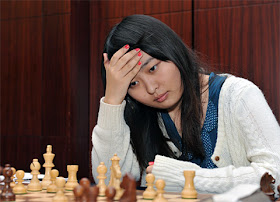Whether by design or due to the intransigence of the human spirit, so too it is with Islam -- we just don't read it about it too often in the western popular press. I have a feeling that such articles/reports rarely, if ever, make it into the popular press, or even into the academic press, in very many countries where Islam is the predominant religion. Although the religion of Mohammed is a mere 600 years younger than "Christianity" (give or take some years), Islam has a lot of growing up to do relative to it. But you know, once the genie is let out of the bottle, you cannot put him back in...
Art Daily has put together a very good summary of recent articles on this study:
Archaeologist says modern sacrifice rituals in the Levant reveal diversity of beliefs
April 14, 2012
|
MIAMI, FL.- Harvard University educated
anthropologist and president of the Paleontological Research Corporation, Dr.
Joel Klenck, conducted a study of Bedouin sacrificial rituals that reveal a
diversity of beliefs in Arab populations in the Levant. Sponsored by a grant
from the Joe Alon Museum, Klenck conducted a study of Bedouin sacrificial
rituals completed in 2012 and featured in a forthcoming publication.
Rarely revealed by Western researchers, Arab pastoral nomads practice several types of sacrificial rituals other than the main feast of sacrifice or “Id al ‘Adha” that occurs the tenth day of the Hadj or “Dhul Hijjah” and is practiced by all observing Muslims. Three other rituals include sacrifices to spirits or “ginn”, ritual slaughters to ward off curses and bless newly married couples, and commemorations to deceased family members. Another type of sacrifice practiced by Bedouin in the Levant comprises sacrifices to a “weli” or revered person. Klenck states, “Bedouin sacrifice sheep, goats, cattle and occasionally a camel to a weli to redeem vows, incur healing, give thanks or insure fertility. Individuals performing the sacrifices believe the weli will act as a mediator between them and Allah to facilitate their requests.” Around 1771, Muhammad Ibn ‘Abd al-Wahhab, a cleric who traveled throughout Saudi Arabia and Iraq, began to influence the ruler of Dara’iya, Muhammad Ibn Sa’ud, whose tribe created the Kingdom of Saudi Arabia in 1932. The religious leader al-Wahhab formed a movement that denounced Bedouin believing in the special powers of a weli, punished individuals performing sacrificial rituals to these revered persons and largely eradicated these practices. Although sacrifices to Bedouin saints are mostly forbidden in Saudi Arabia, these rituals continue to be practiced by Muslim pastoral nomads in the Levant and North Africa. Klenck states, “I was able to observe Bedouin venerating the tombs of Sheikh Abu-Hurreira, Ibrahim, Hussein, Falougie, Nebi Musa, and the adjacent sepulchers of Al-Azzam and Al-Nabari. The sheikhs’ tombs vary in their size, care and decoration. The tombs often feature sticks of wood mostly of palm with white or green cloth tied to each structure. According to the Bedouin, the white cloth represents peace and goodwill and is a beneficial omen for those petitioning Allah through a weli. The Bedouin consider the color green to be very holy as its significance stems from their traditions and because they allege the tomb of the Prophet Muhammad and the Kabbah in Saudi Arabia are covered with green tapestries. At the tombs the Bedouin often light candles and sometimes leave salt, sugar, matches, and coins in the sacred area.” While Bedouin women perform prayers and light candles at the tombs, the men perform animal sacrifices near the sepulchers. At the tombs of Al-Azzam and Al-Nabari, the trees surrounding the sacred areas exhibit slash marks where Bedouin hang animal carcasses during butchery activities. After the sacrifice, the meat is boiled and everyone participates in the subsequent feast, especially the poor. Several Bedouin stated that in past centuries, individuals left valuable possessions at the sheikh’s tombs knowing that no Bedouin would dare steal from the tomb for fear of being cursed. Klenck concludes, “Studies of Bedouin animal sacrifices reveal a diversity of beliefs and are important in understanding cultures and ritual activities in the Levant.” |




